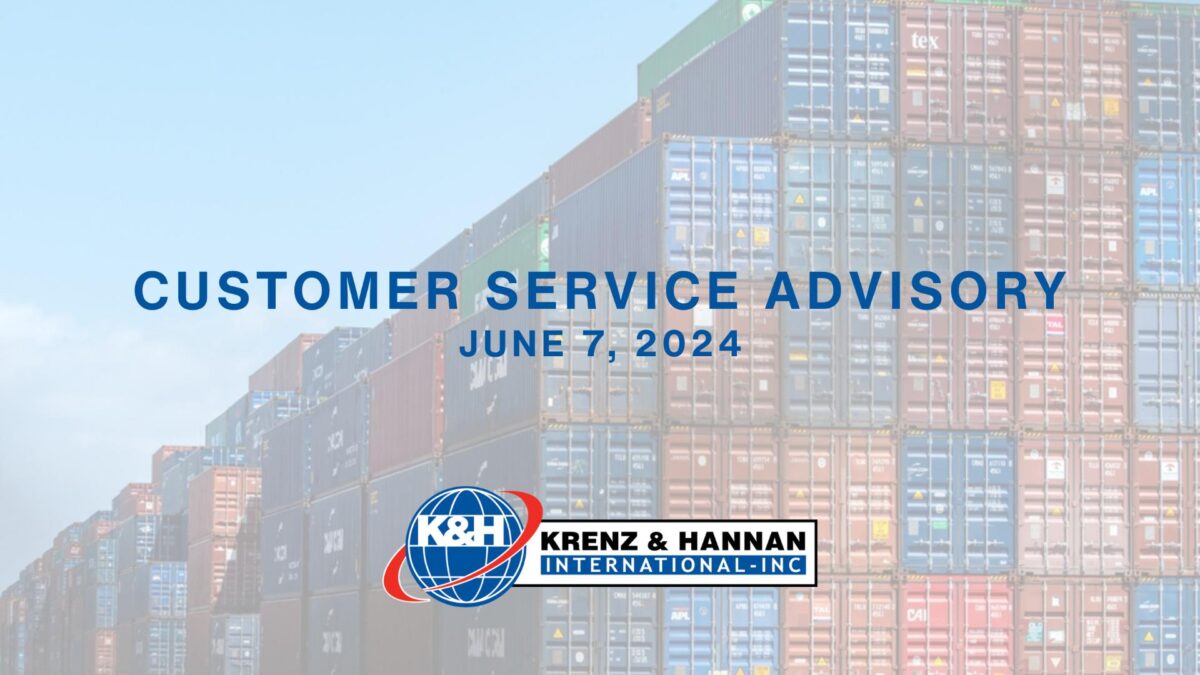
Hello Customers, Colleagues, and Friends…
As we enter Q3 and approach traditional “Peak Season” in international transportation, there are some issues pressing the industry that we feel you all should be aware of. Increasing import freight costs, ocean carrier capacity shortages, and changes to the USA-China import tarriffs.
Import ocean freight costs have spiked significantly since the beginning of May and are expected to continue increasing as we head into peak shipping season. The chain of events is very reminiscent of the COVID-19 pandemic shipping crisis we experienced a few years ago. Ocean carriers have seen an increase in bookings nearing 20% per the Journal of Commerce. Costs have already surpassed the spike seen early in 2024 at the beginning of the Red Sea Crisis. “Unless something changes in the short term, rate levels could continue upwards and — if the Red Sea crisis, Asian port congestion and sudden demand spikes do not ease up — then we are once again looking at major delays and $10,000 to $20,000 per box freight rates on key trades.” per JoC writer Lars Jensen.
A major driver of the increased ocean freight costs is due to the shortage of capacity from the major ocean carriers. These capacity shortages are due to continued ramifications of the Red Sea Crisis which continues to divert trade lanes, displace containers from circulation, and increase transit times. Barring the resumption of regular Suez Canal transits, carrier executives and forwarders expect capacity to remain tight until early October. Capacity shortages are a result of blank sailings and omitted calls, which cause the volume backlogs and also the short supply of empty containers, and further lead to port congestion and vessel delays. While it’s impossible to know how long the surge will continue, it could still last for another couple of months if the Red Sea situation doesn’t improve.
On May 28, 2024, the USTR published a Federal Register notice specifying subheadings on the Harmonized Tariff Schedule of the United States (HTSUS) and directing increases for stated products to take effect August 1, 2024, and subsequently January 1, 2025, and January 1, 2026. Please read the Federal Registrar Notice below to understand if these increases apply to your imports. Subsequently, on May 30th 2024 the USTR published a notice notifying the public of certain China tariff exemptions being extended or expiring. Please review the links below to understand if these rulings apply to your imports.
WHAT THIS MEANS FOR YOU
- Heightened ocean costs for ocean freight, primarily affecting Asia to USA import trade lanes currently
- Increased risk of rolled/canceled bookings causing additional delays to intended shipping schedule
- Heightened importance of arranging ocean freight in advance of Cargo Ready Date to ensure efficient booking process
- Expect isolated port / intermodal railyard operation disruptions due to increased cargo volumes
Please continue to plan accordingly for your import, export, and domestic transportation needs.
Sincerely, Your friends at Krenz and Hannan International
SOURCES
https://natlawreview.com/article/ustr-starts-new-section-301-tariffs-be-prepared
